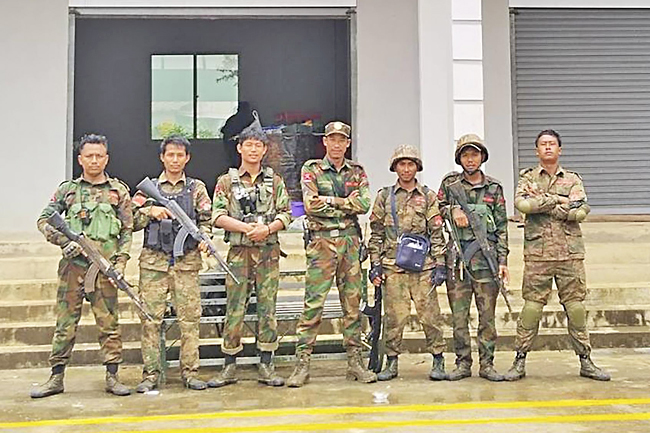BANGKOK (AP) – New fighting has broken out in northeastern Myanmar, bringing an end to a Chinese-brokered cease-fire and putting pressure on the military regime as it faces attacks from resistance forces on multiple fronts in the country’s civil war.
The Ta’ang National Liberation Army, one of three powerful militias that launched a surprise joint offensive last October, renewed its attacks on regime positions last week in northeastern Shan state, which borders China, Laos and Thailand, and the neighbouring Mandalay region with the support of local forces there.
Since then, the Myanmar National Democratic Alliance Army has joined in, and by yesterday, combined forces from the two allied militias had reportedly encircled the strategically important city of Lashio, headquarters of the regime’s northeastern military command.
This is the next phase of October’s “1027” offensive, said spokesperson Lway Yay Oo for the TNLA, which last week said the military provoked retaliation with artillery and airstrikes despite the cease-fire.
“In phase two, our number one aim is the eradication of the military dictatorship, and number two is the protection and safety of local people,” she said.

Spokesperson Thet Swe for the military regime accused the militias of putting civilians in jeopardy by restarting the fighting.
“As the TNLA are starting to violate the cease-fire, the Tatmadaw is protecting the lives and the property of the ethnic people,” he said in an email to the AP, referring to the military by its Burmese name.
The TNLA claims to have already captured more than 30 army outposts, and to now control the western part of Mogok, whose ruby mines make it a lucrative target. There is also fighting for the town of Kyaukme, which sits at a highway crossroads, and Nawnghkio to the southwest, which leads toward the major military garrison town of Pyin Oo Lwin along the same highway.
“That’s where you need to cut it off to prevent the military from sending reinforcements,” said Singapore-based analyst Morgan Michaels with the International Institute of Strategic Studies who runs its Myanmar Conflict Map project.
In Mandalay, the region west of Shan, a local People’s Defence Force – an armed resistance group – joined the TNLA’s offensive. Spokesperson Osmond for the Mandalay People’s Defence Force, who would only give his nom de guerre because of safety concerns, said his and other local resistance groups have seized nearly 20 military outposts.
With the renewed violence in the northeast, China’s Foreign Ministry told the Associated Press it stood ready to again provide support for peace talks.
“China urges all parties in Myanmar to earnestly abide by the cease-fire agreement, exercise maximum restraint, disengage on the ground as soon as possible, and take practical and effective measures to ensure the tranquility of the China-Myanmar border and the safety of Chinese personnel and projects,” the ministry said in a faxed reply to questions.






